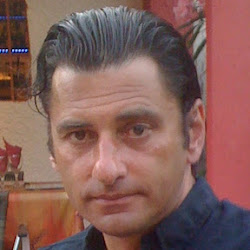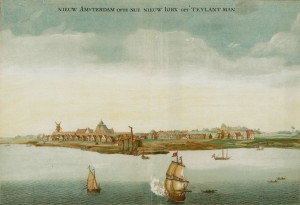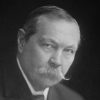New Amsterdam Genealogy Project – Part 1
Do you have New Amsterdam ancestors? You may want to check out the New Amsterdam project on Geni! Curator George Homs kindly agreed to share with his some insights about the New Amsterdam project and how it can help you in your family history research. Read part one of our interview below! Check back tomorrow for part 2!
You’ve played a pivotal role in organizing the New Amsterdam project on Geni. Can give us an overview of what it’s about?
We started the project about a year ago, in May 2011. We said that we wanted to pull of something unique: to build a bridge between Americans and Europeans living today, through their common ancestry.New York is on the ‘edge of genealogy’ – as I like to call it – as it has been the gateway for massive migration between the continents.
We set up the project around chapters. Some people will be interested only in finding a name or a family. For them, we scrutinize available online family genealogies, and provide the links. Other people will want to know more about the historical context. Personally, I believe that understanding the context is an integral part of the ‘genealogical experience’. Understanding the history can give you more clues to uncover new facts. That’s why we provide context, like information about the immigrant ships, territorial development, and bibliographical sources. We also offer some fun, like highlighting famous descendants (actors, writers, politicians…) and living descendants. And, we have a dynamic global discussion forum where people can exchange information – or even ask a Dutch user to help with translations.
The bulk of New York immigration occurred in the 19th and 20th centuries. Why your focus on the 1609-1674 timeframe?
Focus is important if you want to keep a project under control. We took 1609 as the starting point, when Henry Hudson explored the river around the island of Manna-hata on behalf of the Dutch West India Company. The first settlers arrived four year later on Noten Eylandt (now Governors Island). The settlement of Manhattan started with the construction of Fort Amsterdam in 1625 and expanded rapidly under Director General Peter Minuit. A year later, the territory became a Dutch province, New Netherland. By 1653, under Governor Pieter Stuyvesant, New Amsterdam was formally incorporated as a city. Until 1674, you had a huge entity under Dutch rule that was culturally very distinct from the English colonies that were established at that time. For American genealogists, it is particularly challenging because all the original records were Dutch – and they refer to origins in many European countries where, again, all sources are other languages. What we see is that online genealogy sites are full of errors and misinterpretations because of the linguistic and cultural barriers.
What does this mean, from a genealogical perspective?
Keep in mind that this was the time of the Dutch ‘golden age’.HollandwasEurope’s economic powerhouse. To give you an idea… Between 1560 and 1622, ‘old’Amsterdamhad grown from 27,000 to 105,000 inhabitants! This golden age was fuelled by massive migration. InNew Amsterdam, Dutch families aspired to establish the same kind of ‘oligarchy’ that was running things in the home country. But, here you had a quite small, very diverse population where cultures were intermarrying pretty quickly. You had Dutch people, but also immigrants from Flanders, Wallonia, Northern France,Germany,Scandinavia…… Actually, it is interesting to remind here that the first big settlement of Manhattan was in 1624, by a group of 50 French Huguenot families led by Jessé de Forest. Whilst the Dutch Reformed Church was the ‘official’ church, religious tolerance was very significant. The Dutch Reformed Church was the ‘official’ church, but the religious tolerance was very significant. Most Calvinists, Huguenots, Lutherans – protestants, in general – would register with the Dutch Reformed Church. The records offer lots of interesting information. But, it is challenging, because the Dutch where transcribing first names, family names, places of origin – with a Dutch twist. You need to have many different cultures and languages in mind to untangle what was meant with those Dutch texts.
What’s your goal with this project?
Quite simply, we want this project to become a global reference forNew Amsterdamgenealogy. We don’t re-inventNew York’s history and, given that we’re all volunteers, we can only share whatever time and knowledge we have available. Still, because of the platform that Geni provides us with, we have a totally unique repository as we are linking thousands of people and families in a highly dynamic way. Without being pretentious, what we’re pulling together here can be of invaluable help to any historian or genealogical society that is interested in the early days ofNew York.
We estimate that about 3,500 original immigrants have come toNew Amsterdam. We want to map each single one of them, and connect them to their ancestors inEurope. We currently have over 2,100 original immigrants. Many of those are already dynamically mapped to European families and living relatives. In addition, we are dynamically linking theNew Yorkfamilies and all their descendants in theUS. The result is a huge and growing map of relationships that can probably connect most Americans, one way or the other, to aNew Amsterdam immigrant.
What was your main challenge in achieving this?
The main obstacles are the erroneous online genealogies. Everybody is copying everybody – and copying mistakes. Some genealogical myths have been dispelled by researchers, but the myths persist because they are always available, somewhere, on the Internet. On Geni, we do our best to eliminate myths by storing information in the projects, and by locking the essential and verified information around our profiles. Through dynamic collaboration with other users, we have a constant exchange of ideas and sources, which is a good way to get towards the ‘best version of the truth’.
View the New Amsterdam Project









 Genealogy Discussions
Genealogy Discussions Genealogy Projects
Genealogy Projects Popular Genealogy Profiles
Popular Genealogy Profiles Surnames
Surnames The Geni Blog
The Geni Blog The World Family Tree
The World Family Tree